Google has been practically unrivaled in terms of producing the greatest low-cost phones available. The company’s A-series has demonstrated this, but increased competition from new devices makes it increasingly tough — which is why the Google Pixel 9a raises the standard even again.
Newcomers in recent months, like as the Nothing Phone 3a Pro and the iPhone 16e, have demonstrated how Google’s lead has narrowed.
Google Pixel 9a review: specifications
| Starting price | $499 / £499 / AU$849 |
| Screen size | 6.3-inch Actua pOLED (2424 x 1080) |
| Refresh rate | 60-120Hz |
| Chipset | Tensor G4 |
| RAM | 8GB |
| Storage | 128GB, 256GB |
| Rear cameras | 48MP (f/1.7) main, 13MP (f/2.2) ultrawide |
| Front camera | 13MP (f/2.2) |
| Battery size | 5,100 mAh |
| Charging speed | 23W wired; 7.5W wireless |
| Size | 6.1 x 2.9 x 0.4 inches / 154.7 x 73.3 x 8.9mm |
| Weight | 6.6 ounces / 185.9 grams |
| Colors | Obsidian, Porcelain, Peony, Iris |
Google Pixel 9a review: price and release date
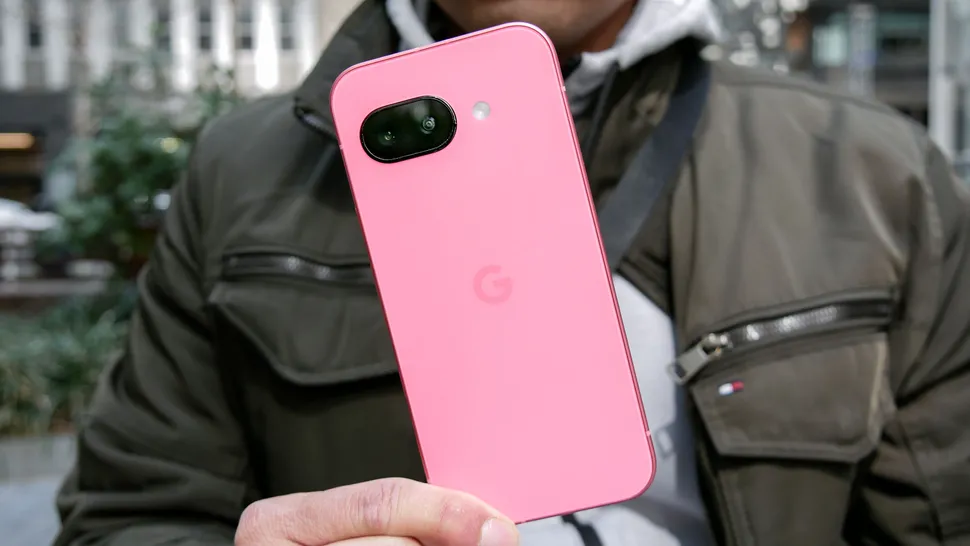
Phone prices continue to rise, an unavoidable trend that we cannot prevent. That’s why I’m relieved that Google hasn’t changed the pricing of the Pixel 9a. The base model with 128GB of storage costs $499, which is less than its closest competition, the $599 iPhone 16e.
This $100 difference also demonstrates how much more value you receive with the Pixel 9a, which I’ll discuss in greater detail. However, I believe that the Nothing Phone 3a and 3a Pro are tempting possibilities for $379 and $459, respectively.
Beginning April 10, the Pixel 9a will be available from various wireless carriers and shops in four colors: obsidian, porcelain, peony, and iris. The 256GB version will be available for $599.
Google Pixel 9a review: design
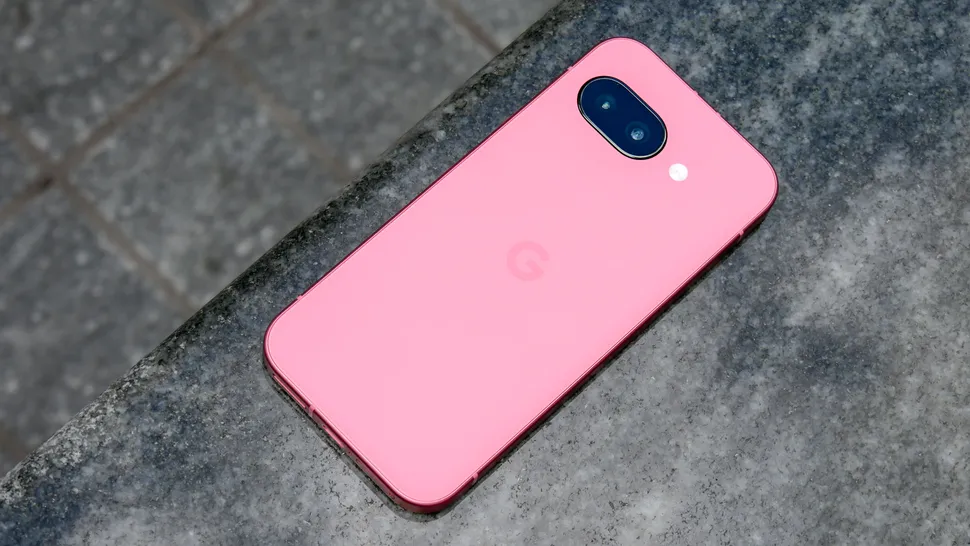
Call it a revamp, but the Pixel 9a seems a little bland in my opinion. That’s because it removes the camera bar style of previous phones in favor of a much more integrated camera housing.
Don’t get me wrong; I enjoy how it makes it seem and feel more consistent, but it loses the individuality that has always distinguished the series from other ‘cheap’ phones.
Other changes are subjective, such as the new flat edges and rounded corners. If not for my unit’s vivid peony color and the two cameras on the back, the Pixel 9a looks awfully similar to the iPhone 16e.
Despite this, the metal frame and composite matte coating give it a robust build quality. Unlike the iPhone 16e, it does not feel as harsh around the edges, making it seem much more pleasant to hold in your palm.
Despite its plain appearance, it’s comforting to know that it has an IP68 designation for water and dust resistance.
Google Pixel 9a review: Display
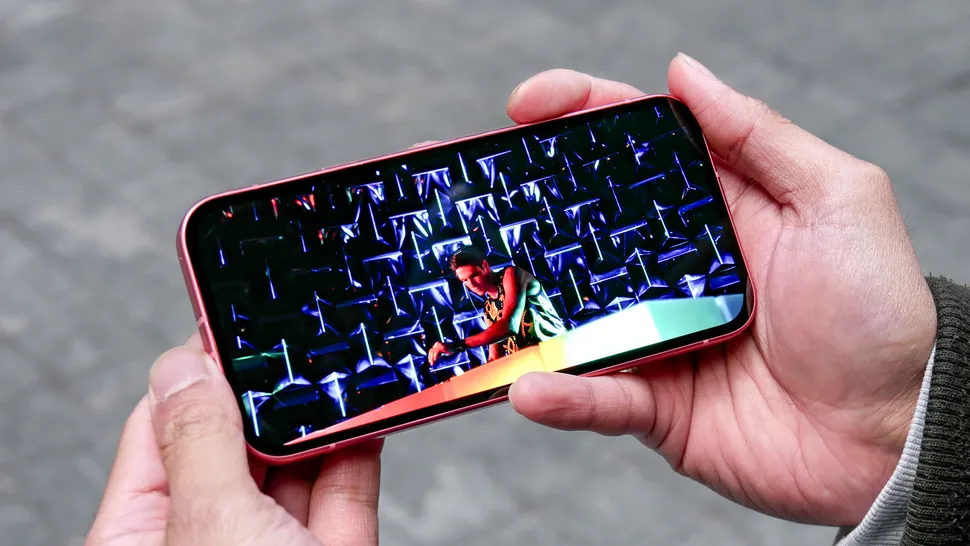
The Pixel 9a’s screen size has increased to 6.3 inches, up from the Pixel 8a’s 6.1 inches. This new 6.3-inch Actua Display is a pOLED screen that looks good, but it doesn’t have the same iridescence as the Pixel 9, so the colors don’t stand out as much.
| Row 0 – Cell 0 | Peak brightness (nits) | DCI-P3 Adaptive/Neutral (%) | Delta-E color accuracy (lower is better) |
| Pixel 9a | 2,076 | 94.2 / 83.8 | 0.24 / 0.20 |
| Pixel 8a | 1,378 | 89.6 / 77.2 | 0.24 / 0.29 |
| Pixel 9 | 2,390 | 84.5 / 75.5 | 0.30 / 0.20 |
| iPhone 16e | 1,028 | 90.2 | 0.26 |
| Nothing Phone 3a Pro | 1259 | 108.9 / 78.7 | 0.27 / 0.2 |
| One Plus 13R | 1,104 | 121.6 / 86.3 | 0.3 / 0.21 |
It’s still a stunning OLED panel, considerably better in my opinion than the iPhone 16e, thanks to its adaptive 120Hz refresh rate, which makes animations appear smooth. But what’s even more astonishing is how bright it becomes.
Budget phones rarely have high-quality panels, thus they typically appear dim. The Pixel 9a, on the other hand, raises the bar for all cheap phones with a staggering peak brightness output of 2,076 nits.
No other inexpensive phone comes close to matching its brightness, even the iPhone 16e, which has a pathetic 1,078 nit brightness. Outside, there’s a distinct difference: the Pixel 9a is brighter and more apparent.
Cameras
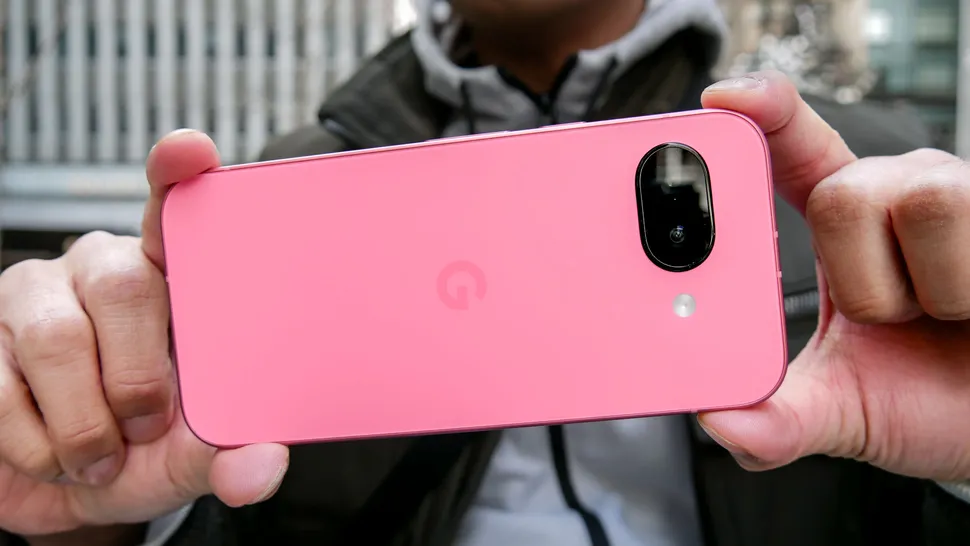
Yes, the camera bar is no longer there, hence the almost flush form of the camera cutout is a throwback. After owning the iPhone 16e for a short period, it’s nice to return to a budget phone with a dual-camera system — and the Pixel 9a does not disappoint.
This combination consists of a 48MP main camera and a 13MP ultrawide. You might believe the main camera is a ‘downgrade’ because the previous Pixel 8a had a 64MP one, but the 9a has a larger f/1.7 aperture, which could help it provide better shots, particularly in low light circumstances.
A new macro focus mode has been added to the series, which allegedly relies on AI to improve and process closeups significantly. But I’m more eager for Night Sight, a first for the series, which includes a true astrophotography mode. And, thanks to the Tensor G4, the Pixel 9a receives access to several of the AI-assisted editing tools I’ve come to rely on, like Add Me, Audio Magic Eraser, Magic Editor, Best Take, and others.


Fortunately, there is no influence on the main camera’s performance, as the new 48MP model competes with the Pixel 8a. I will note, however, that the Pixel 9a has a somewhat brighter image, which appears to wash things out slightly, but I also notice better detail in the brickwork and sign on the building in the upper right corner.


Finally, there’s low light, where the Pixel 9a has dominated other inexpensive phones. Apple definitely concentrated substantially on this with the iPhone 16e, as evidenced by how it catches a little more detail of the tree in my backyard despite the near-complete darkness. However, the Pixel 9a brightens up more of the shadows, resulting in a brighter overall image.


On the video side, the Pixel 9a can capture at 4K 60fps, with slow motion video capability up to 1080p 240fps. The Pixel 9a slightly overexposes the video above when compared to the iPhone 16e, but this isn’t too bad because its dynamic range capability can withstand the bright light from the scene as I pan over to look at the buildings on the right.
Google Pixel 9a review: performance
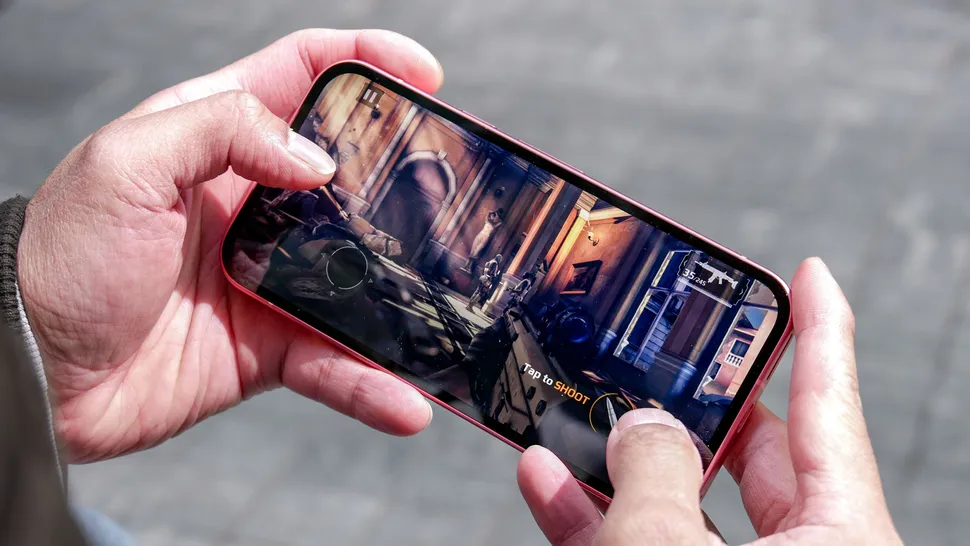
With a Tensor G4 beneath the hood, this practically implies it’s a flagship-level processor. When it comes to ordinary operations, I find it virtually as fluid as my Pixel 9 Pro XL, despite having 8GB of RAM.
My colleagues and I ran benchmark tests on the Pixel 9a, and it performed similarly to the Pixel 9, but only slightly better than the prior Tensor G3. GeekBench 6 scores show an average of 1,707 and 4,512 for single and multi-core tests, respectively. These are good, but nowhere like the 3,328 and 8,132 scores achieved by the iPhone 16e’s A18 chip. In truth, the Pixel 9a does far better when it comes to fundamental activities.
| Row 0 – Cell 0 | Pixel 9a | iPhone 16e | Pixel 8a |
| Chipset | Tensor G4 | Apple A18 | Tensor G3 |
| Geekbench 6 (single-core/multi-core) | 1,707 / 4,512 | 3,328 / 8,132 | 1,581 / 4,093 |
| 3DMark Wild Life Original Unlimited (score/fps) | 9,592 / 57.44 | 11,904 / 71.27 | 8,983 / 53.79 |
| Adobe Premiere Rush time to transcode (mins:secs) | 1:24 | 0:21 | 0:56 |
On the GPU side, it can’t match the iPhone 16e’s performance with a score of 9,592 on 3DMark’s Wild Life Original Unlimited test, resulting in a slightly worse average frame rate of 57.44 fps versus the iPhone 16e’s 71.27 fps. Personally, I don’t notice a significant change when running graphically taxing games such as Modern Combat and Age of Origins. In fact, I would argue that the Pixel 9a’s 120Hz display refresh rate makes them look smoother.
Strangely, the Pixel 9a takes 1:24 to render a video in Adobe Premiere Rush. In contrast, the iPhone 16e takes 21 seconds to render the same video.
Software and AI
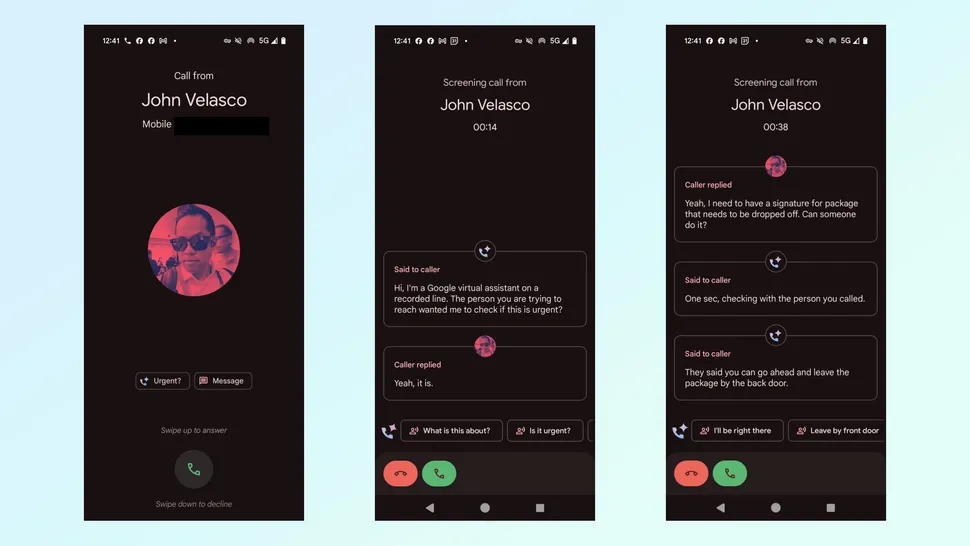
The Pixel 9a ships with Android 15 out of the box and includes many of the AI capabilities I’ve come to rely on with the Pixel 9 Pro and 9 Pro XL — which, I must emphasize, cost hundreds of dollars more. This means it has AI-assisted picture and editing capabilities including Magic Editor, Auto Frame, Reimagine, picture Unblur, and Pixel Studio. I really tested Pixel Studio’s new ability to create photographs with people against Apple’s Image Playground and discovered that Google is well ahead in this regard.
It’s difficult to dismiss the value of the Pixel 9a, which costs a quarter of what most flagship models do. I’ll also acknowledge that the AI functions here are far more useful than any of the Apple Intelligence features I’ve tried on the iPhone 16e. For example, Apple has nothing comparable to the Pixel 9a’s Call Screen. It’s like having an assistant who can handle calls for me while I’m unavailable, replete with contextual responses that I can select while’screening’ the call.
On the negative, the Pixel 9a does not support two unique AI features: Pixel Screenshots and Call Notes. I’m not a fan of Pixel Screenshots, which I tested with the Pixel 9 Pro XL, because it requires extra effort on my part to constantly capture screenshots of what I’m doing for it to work well. Meanwhile, I’m disappointed that Call Notes isn’t available because I like how it can record phone conversations and generate a transcript afterward.
While the Pixel 9a has no trouble downloading the Gemini app, you will only have access to Gemini Advanced for one month, which is $19.99 each month. This was included for a full year with the Pixel 9 Pro and 9 Pro XL, but if you’re like me and have relied on Deep Research to scan websites for various topics or articles you’re working on, you’ll have to pay to use it.
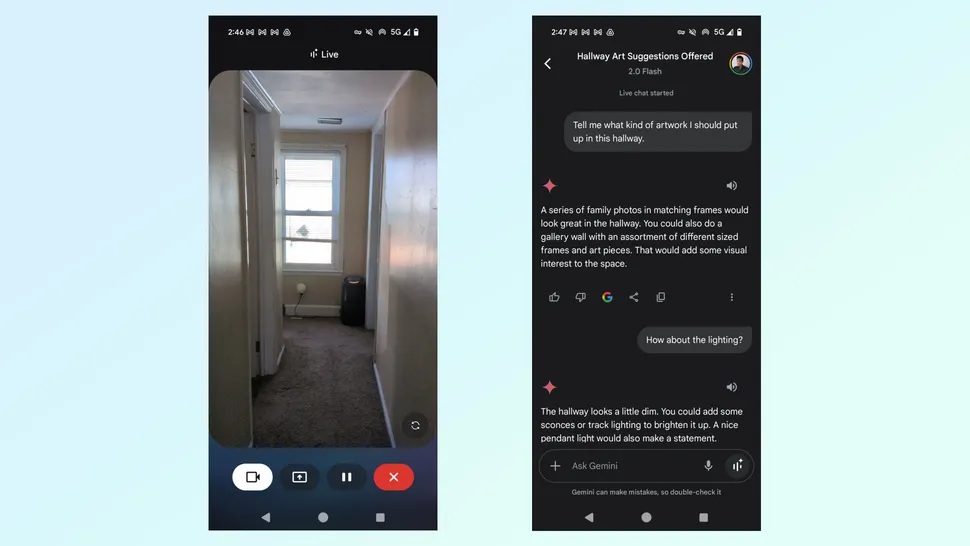
With the most recent Pixel Drop update, I can now use the Pixel 9a’s camera via Gemini Live, as well as screen sharing features. I hired Gemini Live to look at a corridor in my home and advise me on what type of artwork I should hang on the walls. One standout feature is Gemini Live’s cognitive analysis of the corridor, which recognizes that the majority of the lighting emanates from a window in a neighboring room. It actually suggested installing track lighting to better showcase the artwork.
These AI functions are really useful, in my opinion, much above what Apple Intelligence provides with the iPhone 16e. I can’t say enough about how much value they add, and it’s undoubtedly one of the phone’s strongest selling features. And, best of all, the Pixel 9a receives the same seven-year software support.
Google Pixel 9a review: Battery life and charging
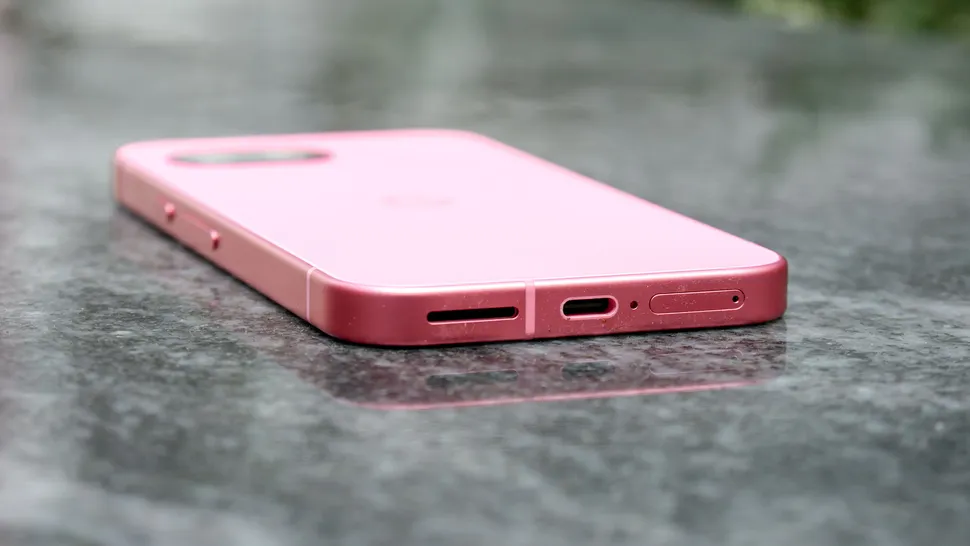
With a larger display comes a larger battery, a 5,100 mAh one to be exact, which gets me through a workday without worrying about it running out. This is a rise over the Pixel 8a’s 4,492 mAh battery, which results in longer battery life in Tom’s Guide’s battery benchmark test.
| Average Battery life (Hrs:Mins) | Charging % in 15 minutes | Charging % in 30 minutes | |
| Pixel 9a | 13:8 | 25% | 47% |
| iPhone 16e | 12:41 | 32% | 57% |
| Nothing Phone 3a Pro | 14:33 | 39% | 70% |
| Pixel 8a | 11:21 | 16% | 33% |
It lasts an average of 13 hours and 8 minutes on a full charge, up from the Pixel 8a’s 11 hours and 21 minutes in the same test. In fact, it outperforms the iPhone 16e, which reached 12 hours and 41 minutes. The combination of a larger battery and a more power-efficient Tensor G4 undoubtedly propels the Pixel 9a ahead of its immediate competitors. However, it falls short of the Nothing Phone 3a Pro’s average time of 14 hours and 33 minutes.
The Pixel 9a’s wired charging speed improves somewhat to 23W, up from 18W on the Pixel 8a. After 15 and 30 minutes of charging, the battery has reached 25% and 47%, respectively, which is faster than the Pixel 8A. Meanwhile, wireless charging remains at 7.5W.
Verdict
I will say this about the Pixel 9a: it is the most well-rounded phone available for less than $500. Even though the Nothing Phone 3a Pro is more appealing at a somewhat lower price, the Pixel 9a provides more value and superior performance. The Pixel 9a’s AI features alone make it stand out from several of its competitors, including the iPhone 16e.
Given the unpredictability of phone costs, Google’s choice to retain the Pixel 9a at $499 is a wise and reassuring step for budget-conscious buyers. It may appear plain after the redesign, but there’s much more to it than meets the eye.

